40+ Post-Pandemonium Telehealth Statistics
The unprecedented events of 2020 took place and changed telehealth’s future forever. Here are over 40 statistics to prove it.

A lot happened over the course of this year that will go down in history as a pivotal moment for the entire, global population.
We all know some of the major events that took place as they affected all of us in some way or another. What started out as optimism for the beginning of a new decade quickly turned into remote working, mask mandates and uncertainty just a few months in.
But, during all of the pandemonium one particular trend within the healthcare industry experienced a massive boost in its usage.
When people couldn’t visit their doctor over fear of exposure they instead turned to the internet.
Yes, people still Googled their symptoms, but that’s not what I’m talking about.
The unprecedented events of 2020 took place and changed telehealth’s future forever. Here are over 40 statistics to prove it.
Exponential Boosts in Adaptation
Doctors actively promoted telehealth services in 2020.
Patients could still have appointments, from the comfort of their own home, without potentially exposing others to illness.
As a result, telehealth’s usage, acceptance and development all accelerated dramatically.
The idea of remote healthcare isn’t new. You’ll see from a statistic in this section that publications predicted these services would happen almost one-hundred years ago.
However, the ability to accurately and securely conduct an appointment while the doctor and patient are miles away steadily grew stronger over the past decade.
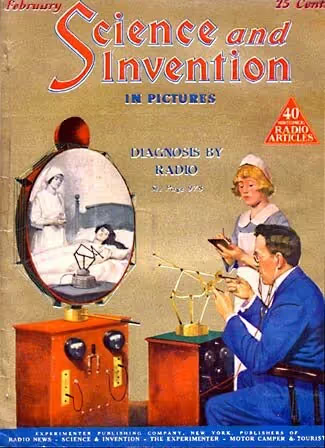
- A 1925 cover of Science and Invention magazine envisioned a device that would allow for a video appointment. (NCBI)
- The number of telehealth primary care visits increased 350-fold from pre-pandemic levels. (HHS)
- Approximately 1,629,000 telehealth encounters occurred in the first 3 months of 2020. (CDC)
- Visits to primary care doctors were down by 60% in early April. (UPI)
- 57% of providers view these services more favorably than they did before the pandemic. (Mckinsey & Company)
- One-quarter of patients had not considered remote appointments before the COVID-19 outbreak. (Risk Management Magazine)
- 83% of patients expect to use telemedicine after the pandemic resolves. (Medical Economics)
- Only about 17% of licensed substance abuse treatment facilities had capabilities for remote appointments prior to the pandemic. (Science Direct)
- About 20% of telemedicine visits occurred over the telephone, the rest involved the use of various video conferencing platforms. (Journal of Substance Abuse Treatment)
- About 17% of licensed substance abuse treatment facilities had any remote treatment capabilities prior to the pandemic. (Science Direct)
- Weekly telemedicine visits jumped to more than 1 million a week during spring 2020. (UMTRC)
- Venture capital funding for this industry almost tripled in Q1 of 2020 compared to the same period in 2019. (Fierce Healthcare)
- Telemedicine’s market size shold grow at a compound annual growth rate (CAGR) of 19.2 percent by 2025. (Healthcare Weekly)
The Patient Landscape is Changing
An industry is only as popular as it’s consumers allow it to be. That sounds like a poetic statement but it makes sense, clients drive demand. In the past, patients weren’t as open to trying telehealth services.
This was either because they didn’t have the technology to join appointments from their devices or because they didn’t feel comfortable with it.
Well, beyond all of the craziness throughout 2020, capable technology has been around long enough for the general population to grew accustomed to using it. As a result, they have a hand in driving remote care’s popularity.
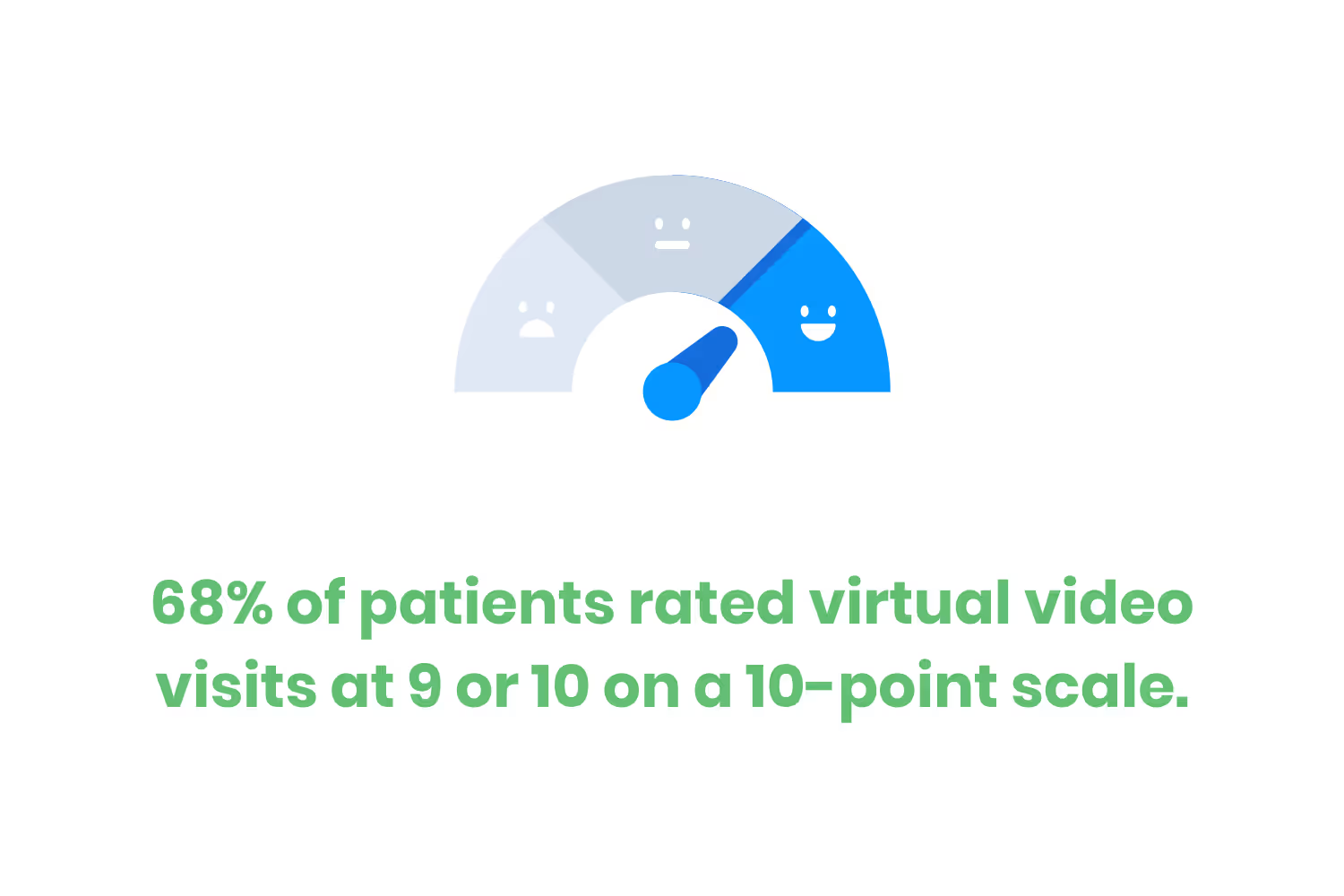
- 96% of Americans own a cell phone of some kind. (Pew Research)
- 68% of patients rated virtual video visits at 9 or 10 on a 10-point scale. (Massachusetts General Hospital)
- 91% of patients agree that telemedicine would help them adhere to appointments and manage prescription refills. (Doctor.com)
- Patients save over 100 minutes of their time with remote appointments. (Forbes)
- 67% of consumers say they have delayed seeking care for a health problem. (American Well)
- About 30% of emergency department visits among patients with common chronic conditions are potentially unnecessary. (Modern Healthcare)
- Every time a patient walks into their doctor’s office or the emergency room, there’s a 75% chance that they could have stayed at home. (InTouch Health)
- 55% of respondents said they are willing to use telehealth with a doctor they do not yet know. (Patient Engagement HIT)
- 67% of consumers say they have delayed seeking care for a health problem. (American Well)
- 69% of telehealth encounters were for adults aged 18-49 years old in 2020. (CDC)
- 41% of Gen Z patients prefer digital or virtual experiences with medical professionals. (Becker’s Hospital Review)
- 60% of Millennials support the remote appointments to replace in-office visits. (Media Logic)
Payment Isn't Fully Fleshed-Out
Organization’s spend thousands of hours determining the payment model and structure before releasing their service, technology, or product.
But, it’s simply not that easy within the healthcare industry.
There’s a lot of different parties involved that have an influence on the price that ultimately lands on the patient’s lap. Thus, the payment structure for remote care isn’t entirely fleshed out yet.
Not to mention the explosion in popularity that happened this past year, as proven in an earlier section within this blog post. The end result is a mixed back of state mandates and convenience fees.
There’s an overall positive outlook from both patients and healthcare organizations on the cost-savings from these types of appointments, though.
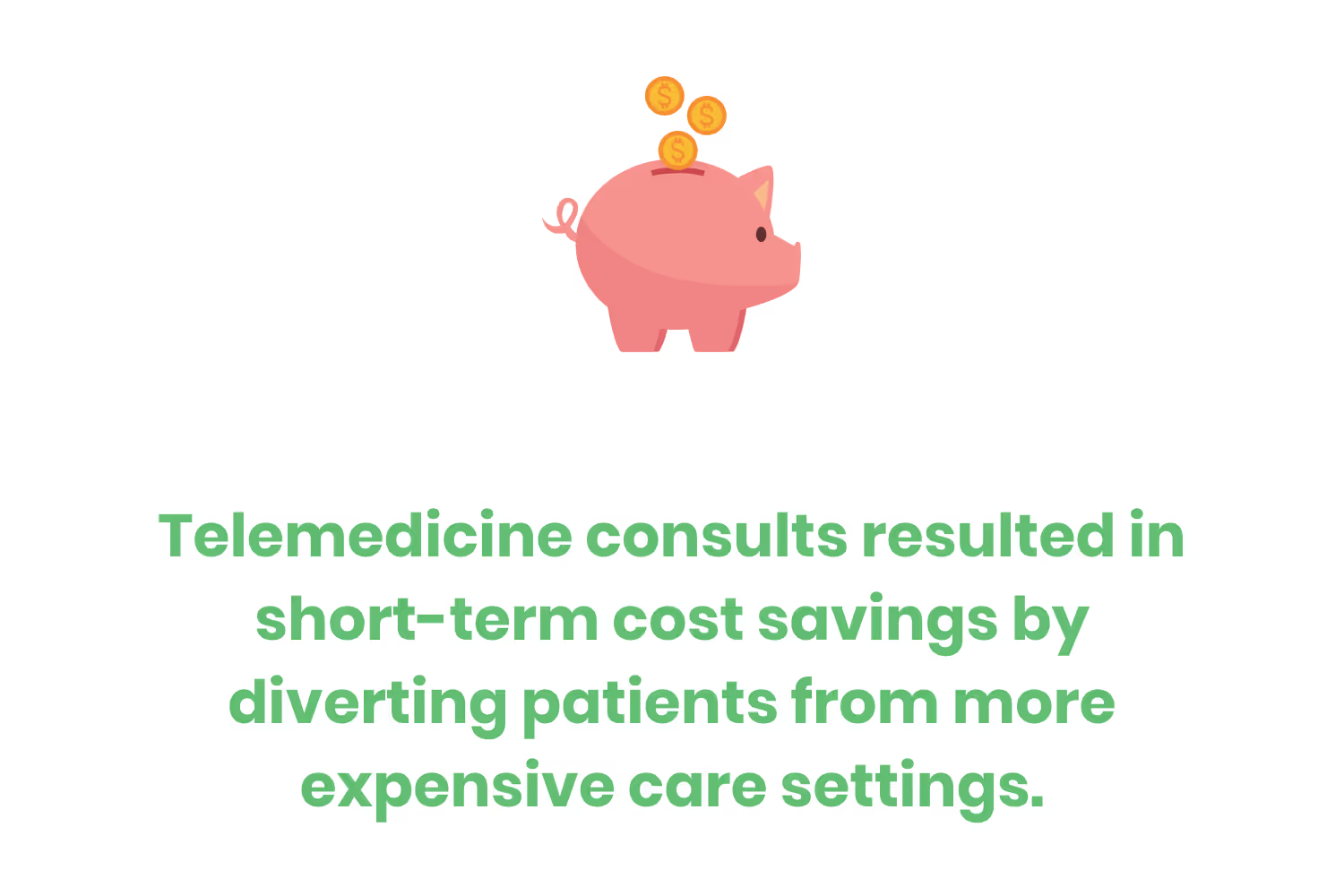
- Only 20% of states require payment parity between telemedicine and in-person services. (The New England Journal of Medicine)
- Many physicians charge a convenience fee for the patient, ranging from $30 to $130 per visit. (Capture Billing)
- 20%of all outpatient costs across the public and private sectors could shift to telehealth or virtual care. (McKinsey)
- Telemedicine consults resulted in short-term cost savings by diverting patients from more expensive care settings. (The American Journal of Emergency Medicine)
- The University of Pittsburgh Medical Center saves $86.64 on average every time a patient receives primary care or urgent care online versus going to an ER or urgent care clinic. (American Council on Science and Health)
Virtual May Mean Vulnerable
Technology is great.
That’s not a groundbreaking statement, many of us rely on different devices, software and tools to do our jobs on a daily basis that didn’t exist a decade ago.
However, moving away from an analog structure sometimes opens the door to more vulnerabilities.
No technology is 100% secure. Proof of that comes from horror stories about hackers getting into implanted medical devices to change insulin dosage settings. But what’s the worst that could happen during a virtual visit?
Imagine having a video appointment with your doctor where you’re talking about a sensitive, personal topic. While you’re explaining the ailment you’re experiencing to your physician, someone hacks their way into your session and doesn’t say anything. Just sits in the background, recording everything that’s happening.
That’s a pretty scary scenario.
Similar instances happened throughout 2020 while organizations mandated that their staff work remotely. Experts coined the term “Zoom Bombing” to describe these instances.
Surprisingly, though, patients don’t seem too worried.
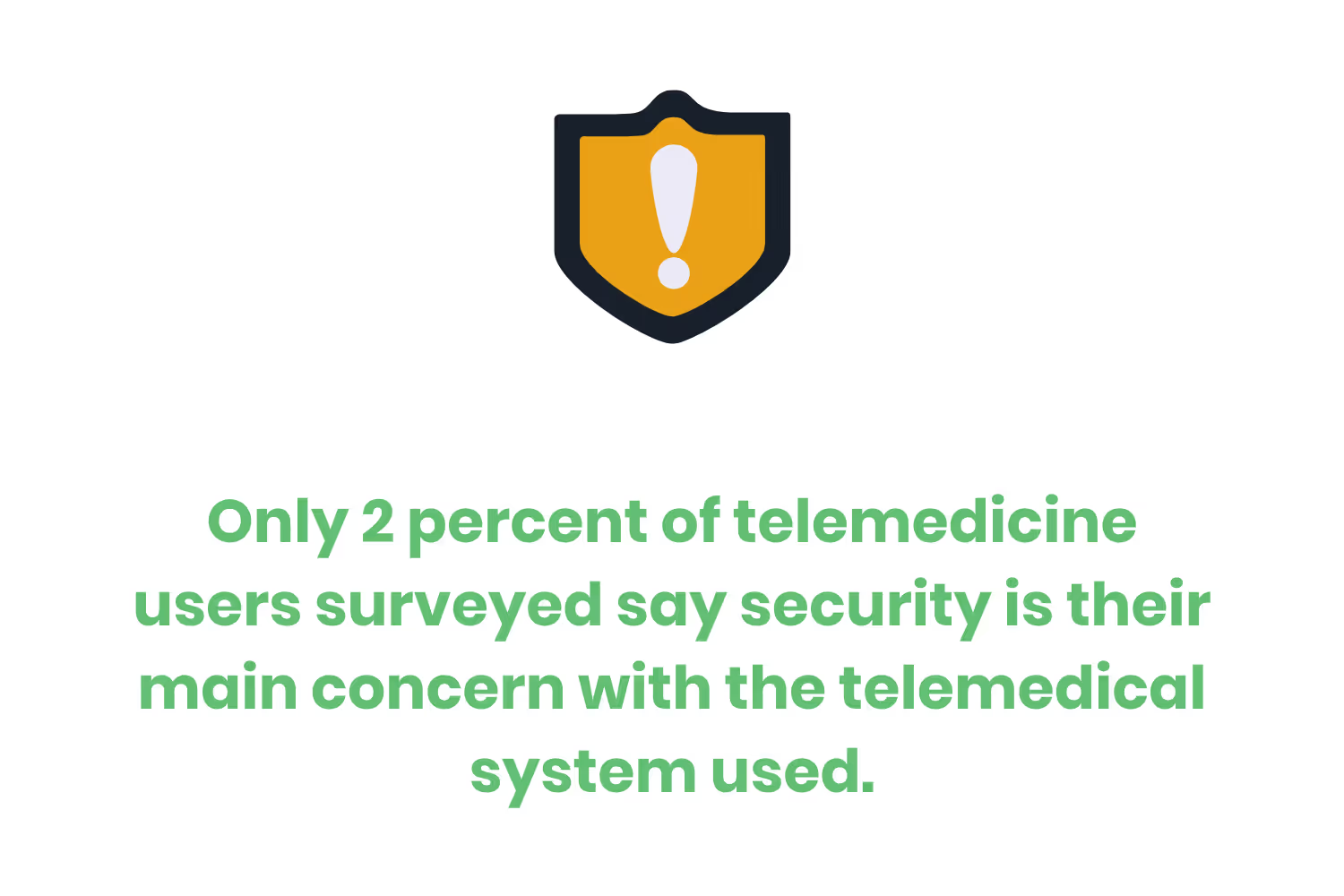
- Only 2% of telemedicine users surveyed say security is their main concern with the telemedical system used. (Software Advice)
- The FBI issued a cybersecurity warning after receiving multiple reports of hijacked video conferences in March of 2020. (FBI)
- Telehealth providers have experienced a 30% increase in targeted attacks as popularity skyrocketed throughout 2020. (Help Net Security)
- Popular video-sharing app, Zoom, is facing a class-action lawsuit for sharing data with Facebook. (Expert Institute)
There are Still Other Difficulties to Solve
Nothing’s perfect. You could create a groundbreaking piece of technology that solves some of the toughest problems in the world. Yet, people can’t adopt it fully upon release.
That opening statement to this section may sound a little overexaggerated. But, believe it or not, that’s not too far off from what we’re seeing happen with telemedicine.
I imagine if you’re reading this blog post you have a strong internet connection. After all, the internet is practically an essential part of our household and businesses.
That’s not the case in some areas of rural United States. Yes, they still have access to the internet, it’s just not powerful enough to run groundbreaking technology. What’s worse is the upward trend in healthcare facility closures in those areas.
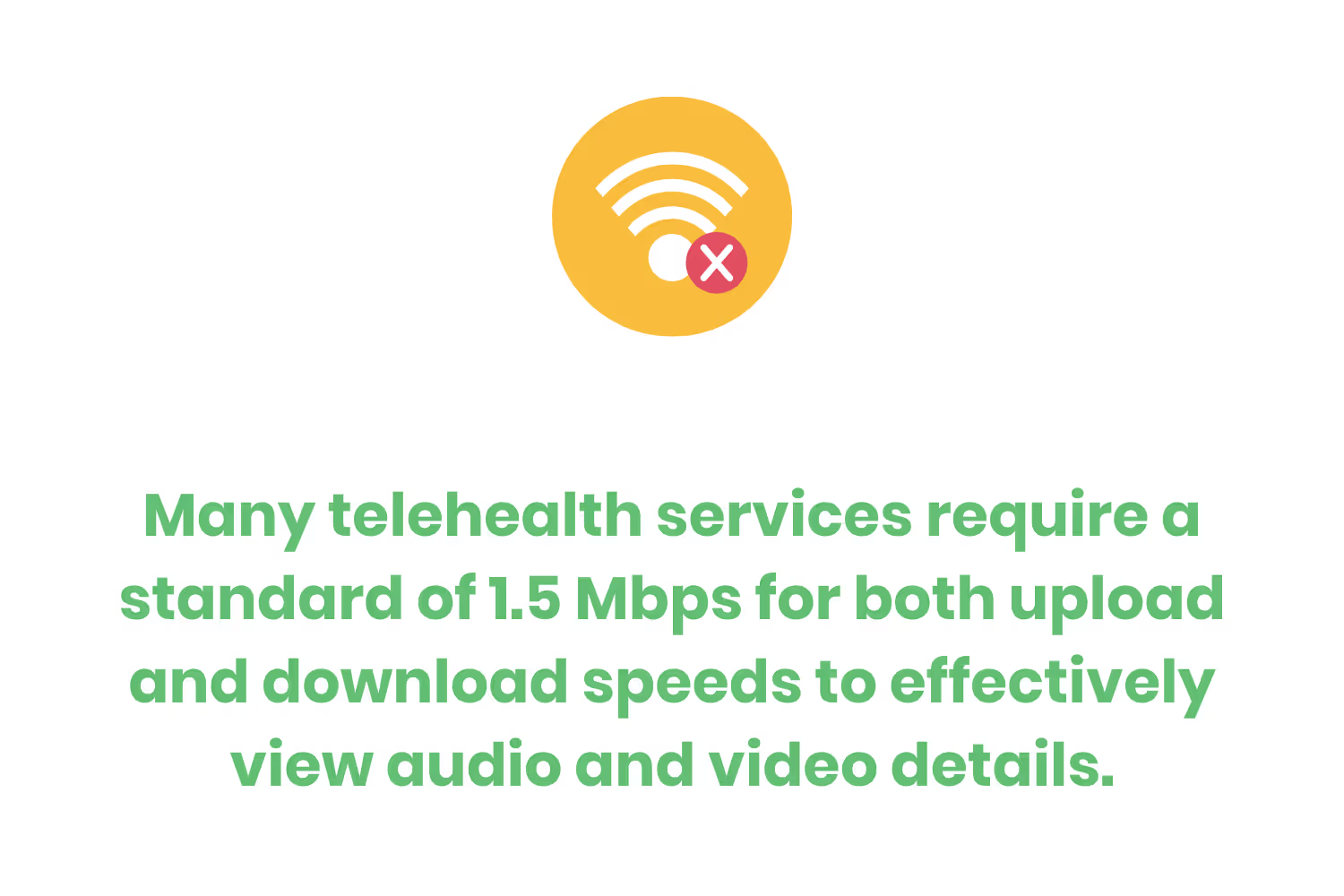
- 133 rural hospitals have closed since 2010. (Sheps Center UNC)
- 69.3% of rural areas had access to high-speed broadband internet that met the minimum benchmark set by the Federal Communications Commission. (Rural Health Info)
- 71% of rural residents reported owning a smartphone, compared to 83% of suburban and urban residents. (Pew Research)
- Many telehealth services require a standard of 1.5 Mbps for both upload and download speeds to effectively view audio and video details. (Managed Healthcare Executive)
- Telemedicine encounters face technical challenges 40% of the time. (Neurology Journals)
- Only half of boomer smartphone owners have downloaded any apps, and the top ones are not related to health. (Mobi Health News)
- More than a quarter of people age 65 and older say they don’t use the internet. (Pew Research)
- Adults who earn less than $30,000 a year are eight times more likely to not use the internet. (California Healthcare Foundation)
Conclusion
2020 was a turning point year.
Some businesses flourished while others had no choice but to close their doors for good due to government mandates and economical hardships.
Healthcare remains one of the few industries that’s not affected by economic turmoil. In fact, it flourished during everything that happened, even throughout the pandemic, largely because of existing telecommunication technology that allowed appointments to continue virtually.
Telemedicine isn’t a new concept, but it always had trouble growing because the majority of patients’ and doctors’ weren’t willing to use it. That’s no longer the case after many practices and their clients had no choice but to use them. Get used to these services because they’re only going to continue growing.
Emphasize your product's unique features or benefits to differentiate it from competitors
In nec dictum adipiscing pharetra enim etiam scelerisque dolor purus ipsum egestas cursus vulputate arcu egestas ut eu sed mollis consectetur mattis pharetra curabitur et maecenas in mattis fames consectetur ipsum quis risus mauris aliquam ornare nisl purus at ipsum nulla accumsan consectetur vestibulum suspendisse aliquam condimentum scelerisque lacinia pellentesque vestibulum condimentum turpis ligula pharetra dictum sapien facilisis sapien at sagittis et cursus congue.
- Pharetra curabitur et maecenas in mattis fames consectetur ipsum quis risus.
- Justo urna nisi auctor consequat consectetur dolor lectus blandit.
- Eget egestas volutpat lacinia vestibulum vitae mattis hendrerit.
- Ornare elit odio tellus orci bibendum dictum id sem congue enim amet diam.
Incorporate statistics or specific numbers to highlight the effectiveness or popularity of your offering
Convallis pellentesque ullamcorper sapien sed tristique fermentum proin amet quam tincidunt feugiat vitae neque quisque odio ut pellentesque ac mauris eget lectus. Pretium arcu turpis lacus sapien sit at eu sapien duis magna nunc nibh nam non ut nibh ultrices ultrices elementum egestas enim nisl sed cursus pellentesque sit dignissim enim euismod sit et convallis sed pelis viverra quam at nisl sit pharetra enim nisl nec vestibulum posuere in volutpat sed blandit neque risus.

Use time-sensitive language to encourage immediate action, such as "Limited Time Offer
Feugiat vitae neque quisque odio ut pellentesque ac mauris eget lectus. Pretium arcu turpis lacus sapien sit at eu sapien duis magna nunc nibh nam non ut nibh ultrices ultrices elementum egestas enim nisl sed cursus pellentesque sit dignissim enim euismod sit et convallis sed pelis viverra quam at nisl sit pharetra enim nisl nec vestibulum posuere in volutpat sed blandit neque risus.
- Pharetra curabitur et maecenas in mattis fames consectetur ipsum quis risus.
- Justo urna nisi auctor consequat consectetur dolor lectus blandit.
- Eget egestas volutpat lacinia vestibulum vitae mattis hendrerit.
- Ornare elit odio tellus orci bibendum dictum id sem congue enim amet diam.
Address customer pain points directly by showing how your product solves their problems
Feugiat vitae neque quisque odio ut pellentesque ac mauris eget lectus. Pretium arcu turpis lacus sapien sit at eu sapien duis magna nunc nibh nam non ut nibh ultrices ultrices elementum egestas enim nisl sed cursus pellentesque sit dignissim enim euismod sit et convallis sed pelis viverra quam at nisl sit pharetra enim nisl nec vestibulum posuere in volutpat sed blandit neque risus.
Vel etiam vel amet aenean eget in habitasse nunc duis tellus sem turpis risus aliquam ac volutpat tellus eu faucibus ullamcorper.
Tailor titles to your ideal customer segment using phrases like "Designed for Busy Professionals
Sed pretium id nibh id sit felis vitae volutpat volutpat adipiscing at sodales neque lectus mi phasellus commodo at elit suspendisse ornare faucibus lectus purus viverra in nec aliquet commodo et sed sed nisi tempor mi pellentesque arcu viverra pretium duis enim vulputate dignissim etiam ultrices vitae neque urna proin nibh diam turpis augue lacus.


.avif)

